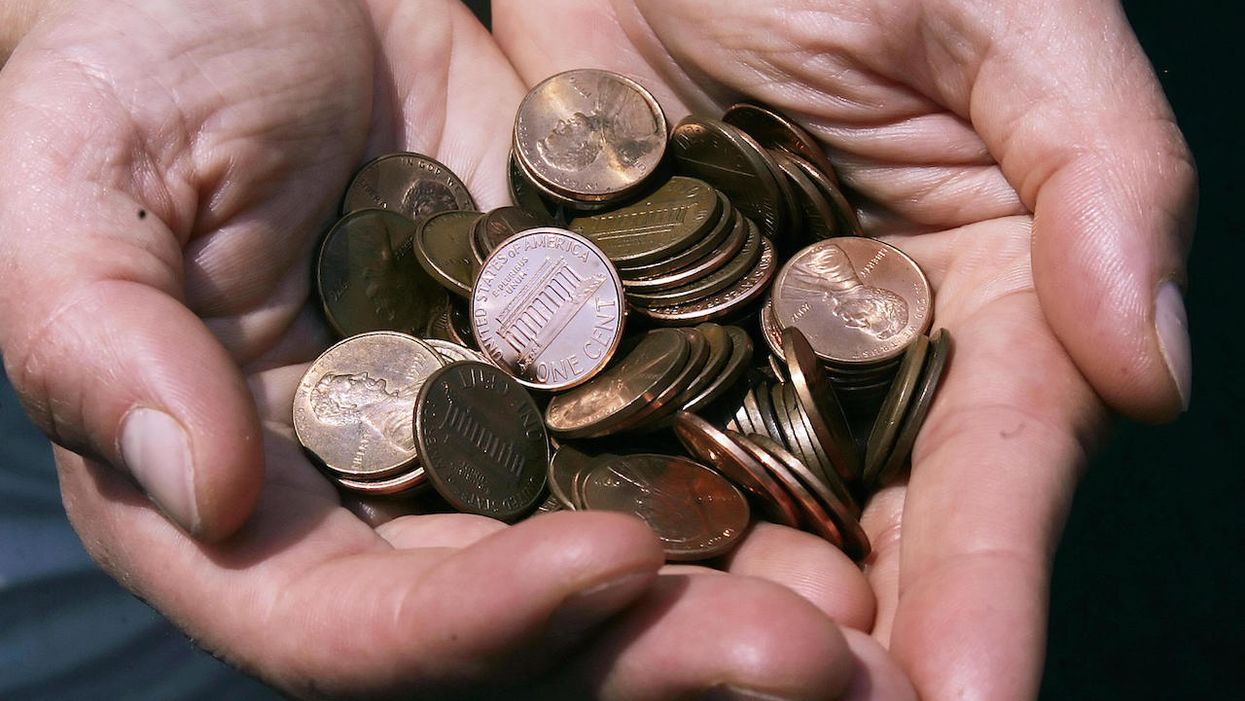
Jim Watson/AFP/Getty Images

A 16-year-old boy found the coin in his lunch change in 1947 and kept it in his collection until his death
More than seven decades ago, a Massachusetts teenager found a 1943 Lincoln penny in his lunch change and he decided to hang on to it until his death just a few months ago.
That extremely rare one-cent piece could rack up as much as $1.7 million when it's auctioned off Thursday in Dallas, the New York Post reported.
The World War II penny is one of only 20 that were accidentally pressed in copper that year, Sarah Miller of Heritage Auctions in Dallas told Fox News.
In 1943, the U.S. Treasury Department had authorized the U.S. Mint to strike all pennies on zinc-coated steel since copper was a strategic metal needed to make shell casing and other items during wartime.
"This is the most famous error coin in American numismatics, and that's what makes this so exciting," Miller told Fox News.
For years, the U.S. government denied the striking error and any existence of the extremely rare coins.
Don Lutes Jr. was 16 when he discovered the rare coin at school in March 1947.
Lutes was old enough to remember the "steel" pennies struck in 1943, which were still in circulation, so it piqued his interest when he found the copper-colored cent in his lunch change. The young coin collector decided to keep the cent in his collection for more than 70 years, until he died in September.
Rumors began to swirl about the Mint's mishap as soon as the coins were released.
"Stories appeared in newspapers, comic books and magazines, and a number of fake copper-plated steel cents were passed off as fabulous rarities to unsuspecting purchasers," according to Heritage Auctions.
It was even reported, falsely, that Henry Ford would give a new car to anyone who provided one of the rare coins to him. Lutes had reached out to the Ford company about his find, but he was informed the rumor wasn't true.
He also contacted the Treasury Department about his penny.
"In regard to your recent inquiry, please be informed that copper pennies were not struck in 1943. All pennies struck in 1943 were zinc-coated steel."
And despite a growing number of reported finds, the Mint "steadfastly denied any copper specimens had been struck in 1943," Heritage Auctions wrote.
Eventually, Lutes gave up trying to cash in on his coin and it stayed in his collection until his death in September.
It was many years before the truth came out about the rare pennies, according to Heritage Auctions.
It seems that a small number of bronze planchets was caught in the trap doors of the mobile tote bins used to feed blanks into the Mint's coin presses at the end of 1942. These few planchets went unnoticed when the bins were refilled with zinc-coated steel planchets in 1943. They eventually became dislodged and were fed into the coin press, along with the wartime steel blanks. The few resulting "copper" cents were lost in the flood of millions of "steel" cents struck in 1943 and escaped detection by the Mint's quality control measures. They quietly slipped into circulation, to amaze collectors and confound Mint officials for years to come. Examples of 1943 bronze cents are known from all three active U.S. Mints today, with 10-15 examples known from the Philadelphia Mint, a half dozen specimens confirmed from the San Francisco facility, and a single coin from the Denver Mint.
As of Wednesday morning, the one-cent coin bid was up to $130,000 on the auction website.